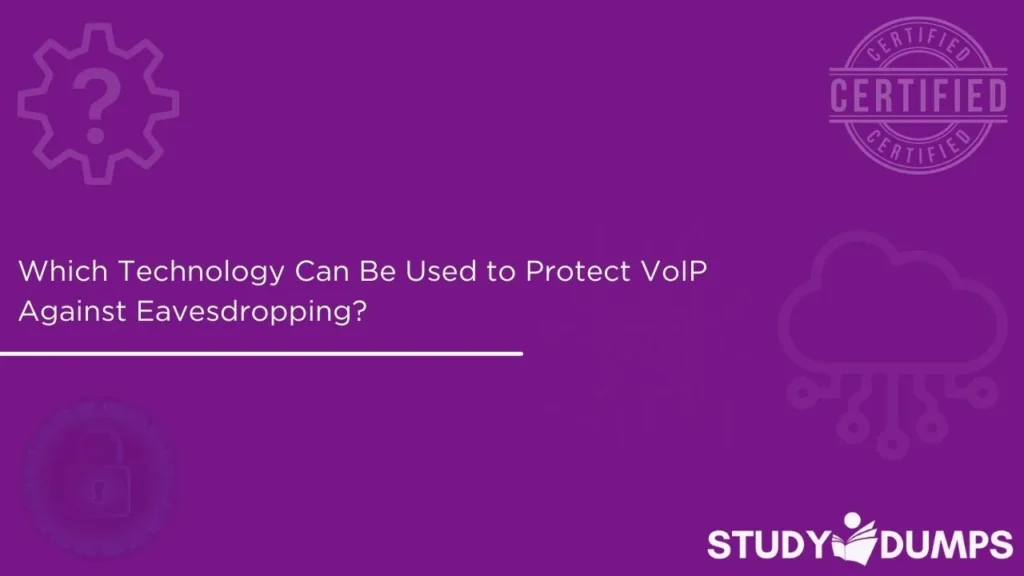Which Technology Can Be Used to Protect VoIP Against Eavesdropping? Find Out Now

Voice over Internet Protocol (VoIP) has revolutionized communication by offering cost-effective and flexible solutions for voice calls over the internet. However, this convenience comes with significant security challenges, particularly the risk of eavesdropping. Unauthorized interception of VoIP calls can lead to sensitive information leaks, financial losses, and compromised privacy. Therefore, implementing robust security measures is crucial to safeguard VoIP communications.
Table of Contents
Understanding VoIP Eavesdropping
VoIP eavesdropping involves unauthorized interception and listening to voice communications transmitted over IP networks. Unlike traditional telephony, VoIP converts voice into digital packets, making it susceptible to various cyber threats. Attackers can exploit vulnerabilities in VoIP protocols, unsecured networks, or compromised devices to intercept calls.
Technologies to Protect VoIP Against Eavesdropping
1. Secure Real-Time Transport Protocol (SRTP)
SRTP is an extension of the Real-Time Transport Protocol (RTP) that provides encryption, message authentication, and integrity for voice data. By encrypting the media streams, SRTP ensures that even if packets are intercepted, they cannot be deciphered without the appropriate keys. It also protects against replay attacks by incorporating sequence numbers and timestamps.
2. Transport Layer Security (TLS)
TLS is a cryptographic protocol that secures signaling messages in VoIP communications, particularly those using the Session Initiation Protocol (SIP). By encrypting the signaling data, TLS prevents attackers from intercepting call setup information, thereby thwarting potential eavesdropping attempts.
3. Virtual Private Networks (VPNs)
VPNs create encrypted tunnels between endpoints, securing all data transmitted over the network, including VoIP traffic. By routing VoIP calls through a VPN, organizations can protect against interception on unsecured networks, such as public Wi-Fi.
4. Session Border Controllers (SBCs)
SBCs act as gatekeepers for VoIP networks, monitoring and controlling the signaling and media streams. They provide security features such as encryption, protocol normalization, and protection against denial-of-service attacks. By enforcing security policies, SBCs help prevent unauthorized access and eavesdropping.
5. Deep Packet Inspection (DPI)
DPI involves analyzing the data packets transmitted over a network to detect and prevent malicious activities. By inspecting VoIP packets, DPI can identify anomalies or unauthorized access attempts, enabling proactive measures against potential eavesdropping.
6. STIR/SHAKEN Protocols
STIR (Secure Telephone Identity Revisited) and SHAKEN (Signature-based Handling of Asserted information using toKENs) are frameworks designed to authenticate caller identities and prevent spoofing in VoIP calls. By ensuring the legitimacy of call sources, these protocols help mitigate fraudulent activities that could lead to eavesdropping.
Best Practices for Enhancing VoIP Security
- Regular Software Updates: Keep all VoIP software and hardware updated to patch known vulnerabilities.
- Strong Authentication Mechanisms: Implement multi-factor authentication to prevent unauthorized access to VoIP systems.
- Network Segmentation: Isolate VoIP traffic from other network segments to minimize exposure to potential threats.
- User Education: Train users on security best practices, such as recognizing phishing attempts and using strong passwords.
- Monitoring and Logging: Continuously monitor VoIP traffic and maintain logs to detect and respond to suspicious activities promptly.
Conclusion
VoIP technology brings efficiency and cost savings to modern communication, but it also opens doors to security risks—especially eavesdropping. To combat these threats, organizations must deploy robust protective technologies such as SRTP for media encryption, TLS for signaling security, VPNs for safe remote access, and SBCs for comprehensive traffic control.
Sample Multiple-Choice Questions (MCQs)
1. Which protocol provides encryption for VoIP media streams to protect against eavesdropping?
A) SIP
B) RTP
C) SRTP
D) HTTP
Answer: C) SRTP
2. What is the primary function of Transport Layer Security (TLS) in VoIP communications?
A) Compress voice data
B) Encrypt signaling messages
C) Assign IP addresses
D) Manage bandwidth
Answer: B) Encrypt signaling messages
3. How does a VPN enhance VoIP security?
A) By increasing call quality
B) By encrypting voice data over public networks
C) By reducing latency
D) By assigning static IP addresses
Answer: B) By encrypting voice data over public networks
4. What role do Session Border Controllers (SBCs) play in VoIP security?
A) They provide voicemail services
B) They manage user accounts
C) They monitor and control VoIP traffic to prevent unauthorized access
D) They assign phone numbers
Answer: C) They monitor and control VoIP traffic to prevent unauthorized access

